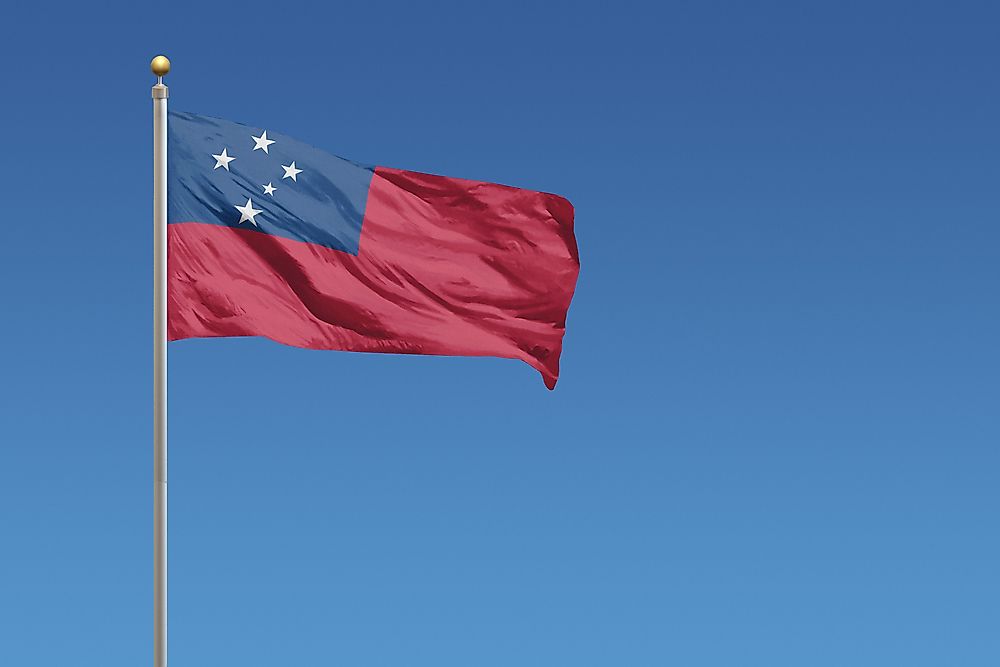What Type Of Government Does Samoa Have?

Europeans first ventured into the Samoan Islands in the early 18th century. The islands were contested by Germany, Great Britain, as well as the US. The contest was quelled by the Tripartite Convention held in 1899 which assigned territories to Germany and the US. German Samoa had achieved self-rule by 1962 while American Samoa continues to be governed as an unincorporated territory of the US. The government of Samoa features traditional customs, and it is discussed below:
Executive Branch Of The Government Of Samoa
The powers of the head of state in the nation of Samoa are bestowed upon the O le Ao o le Malo, a term which in Samoan language translates to Chieftain of the Government. The nation's parliament (Fono) is empowered to select the head of state that is chosen from among the four paramount chiefs. The head of state selects a Prime Minister upon the Fono's recommendation. He further approves laws and can order for the Fono's dissolution. The head of the state in Samoa also has the right to issue pardons. The Prime Minister in the Island of Samoa serves as the head of the Samoan government. The Prime Minister supervises his team of 12 ministers who are appointed and subsequently sworn in by the head of state (O le Ao o le Malo).
Legislative Branch Of The Government Of Samoa
Parliamentary duties in Samoa are executed by the Legislative Assembly which convenes in Apia. The term Fono means meetings or councils in Samoan and Polynesian languages. 50 members sit in the Fono where 47 representatives are matai, and they represent 35 single seat and six two-seat constituencies. Matai is indigenous family title-holders. Two members are chosen as representatives of individual voters. In 2016, an extra member was allowed to meet the 10% female quota requirement. Samoan members of Parliament represent for five years after which elections take place based on the simple plurality system. Any Samoan citizen over 21 years is allowed to vote. Candidates seeking territorial seats in Samoa should have a matai title. The 2016 Samoan general election ended in a victory for the Human Rights Protection Party with 35 seats. 12 independents were chosen as representatives. The current Fono in Samoa is serving in its 14th term.
Judicial Branch Of The Government Of Samoa
The Samoan judicial system has borrowed heavily from indigenous customs as well as English common law. Samoa's Supreme Court stands as the court with the highest jurisdiction, and it is under the chief judge's authority. The country's Court of Appeal gives audience to the cases received from the Samoan Supreme Court. The court features three judges who can also serve in the Supreme Court. There are magistrates' courts with differing levels of authority. The Land and Titles Court is a crucial court in Samoa, and it has judicial and cultural experts selected by the Supreme Court. Cases given audience in the court are title succession and village land, and decisions primarily observing Samoan customs. Village ‘fonos' give audience to some criminal and civil issues.
Administrative Divisions Of Samoa
The territory of Samoa has eleven districts namely Va'a-o-Fonoti, Atua, Palauli, Gagaifomauga, A'ana, Vaisigano, Fa'asaleleaga, Aiga-i-le-Tai, Tuamasaga, Gaga'emauga, and Satupa’itea. These districts had already been founded before European arrival. Every district prides in a constitutional foundation or faavae which is under the traditional order of title precedence present in an individual district's faalupega or traditional salutations. The responsibility to coordinate the activities of a district rests with the capital village.











